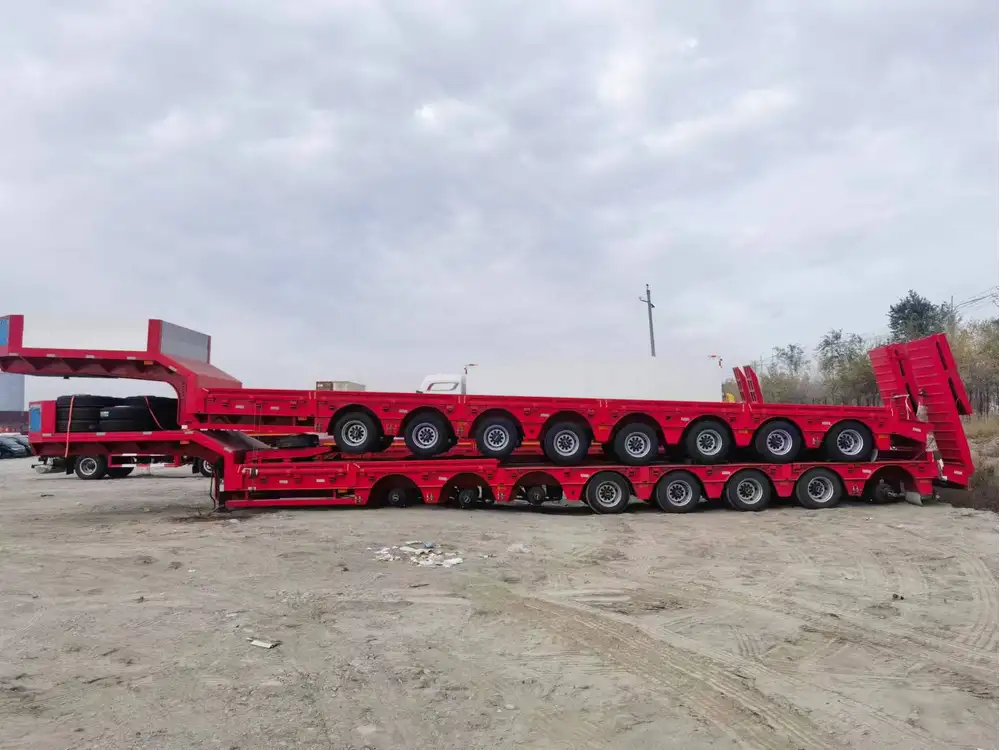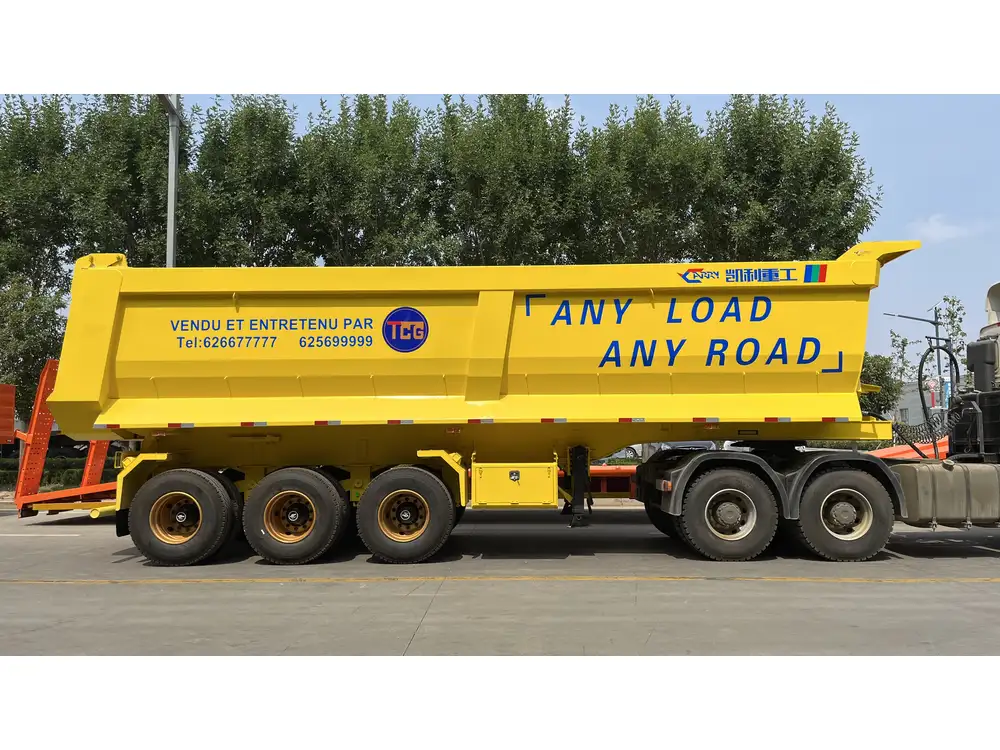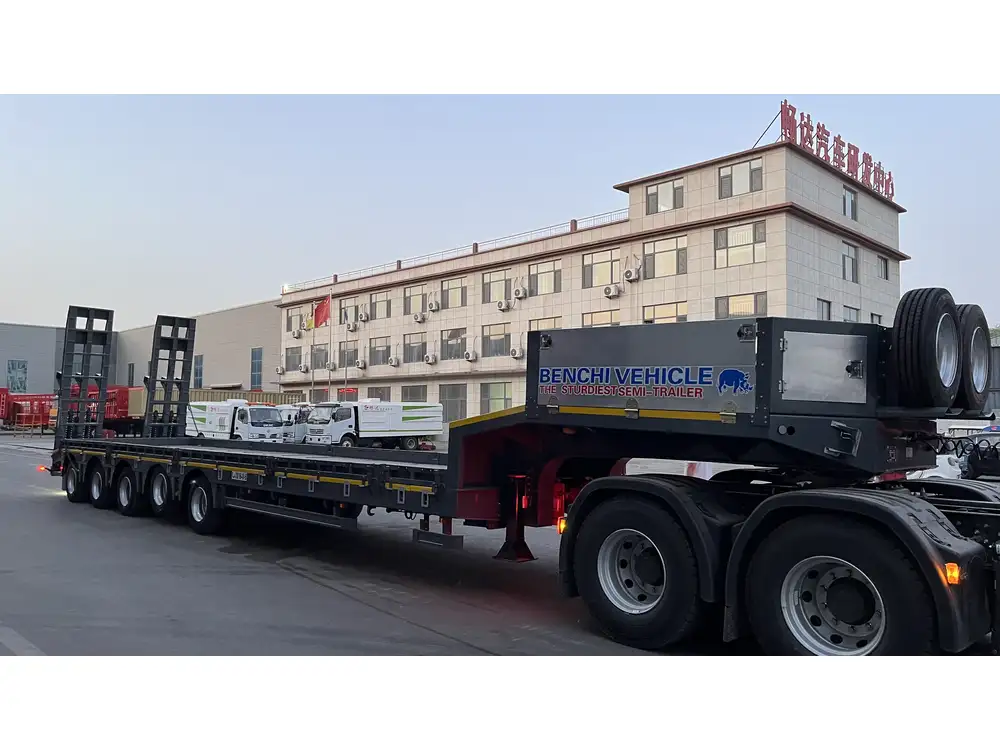When it comes to transportation and logistics, flatbed trailers play a crucial role, particularly in the trucking industry. Their design attributes enable the efficient movement of various types of cargo. As one of the most versatile types of trailers, flatbed trailers are pivotal for loads that are oversized or cannot be accommodated by enclosed trailers. In this detailed examination, we delve into the question: how high is a flatbed trailer? We will explore the dimensions, industry standards, and factors influencing these measurements.
What Is a Flatbed Trailer?
Flatbed trailers are characterized by their open deck and lack of side or rear enclosure, making them ideal for transporting heavy and oversized loads. This design enables loading and unloading from the sides, front, and back, using cranes, forklifts, or other heavy machinery.
Key Features of Flatbed Trailers:
- Open Deck Design: No walls or roofs, allowing ease of loading.
- Varied Sizes: Can accommodate different lengths and widths.
- Built-in Stability: Designed to accommodate heavy weights while maintaining stability during transit.

Height Specifications of Flatbed Trailers
Standard Height Measurements
Most flatbed trailers adhere to specific height standards to comply with legal regulations and ensure safety during transportation. The standard height of a flatbed trailer generally ranges from 48 to 60 inches off the ground. This height is measured from the base of the trailer to the top of the deck.
Comparative Height Data Table
| Trailer Type | Standard Height | Typical Capacity |
|---|---|---|
| Flatbed Trailer | 48 – 60 inches | Up to 48,000 lbs |
| Lowboy Trailer | 18 – 24 inches | Up to 40,000 lbs |
| Dry Van Trailer | 48 – 52 inches | Up to 45,000 lbs |

Factors Influencing Trailer Height
The height of a flatbed trailer can be influenced by various factors:
- Type of Cargo: Certain cargo types may require specialized configurations leading to variations in height.
- Regulatory Compliance: Federal and state regulations can dictate maximum allowable heights, ensuring the safety of vehicles navigating under bridges and overpasses.
- Trailer Specifications: Manufacturers provide models crafted for distinct uses, which can cause minor differences in height.
Custom Trailers and Their Heights
For specialized needs, manufacturers offer custom flatbed trailers. For instance:
- Extendable Flatbeds: These trailers can extend to carry longer loads but maintain standard height when retracted.
- Heavy-Duty Flatbeds: Designed to carry heavier cargo, possibly resulting in a slight increase in height due to reinforced structure.
Average Dimensions and Variations
Flatbed trailers come in various configurations, affecting their height and usability:

Common Sizes of Flatbed Trailers
- 48 ft Flatbed Trailer: Height generally around 50 inches.
- 53 ft Flatbed Trailer: Height approximately 54 – 56 inches.
- 40 ft Flatbed Trailer: Height is usually 48 inches.
Factors Affecting Overall Cargo Height
Beyond the flatbed trailer itself, the total height of the load can influence compliance and safety. Considerations include the following:
- Packaging Height: The height of the load itself can vary widely based on the nature of the goods.
- Loading Techniques: Different methods of loading (flat-stacking, crating) can alter the final shipping height.
- Local Laws: Important to adhere to the trucking regulations per state, which may affect height allowances for a mix of trailer and cargo.
Safety Regulations Surrounding Height
Adhering to the established height regulations is paramount for safety in transportation. The Federal Motor Carrier Safety Administration (FMCSA) provides guidelines to ensure that all trucking operations are compliant with height limitations. Exceeding these limits can lead to severe penalties and compromised safety.

Height Limit Guidelines
- Interstate Highways: Generally, height limits do not exceed 13 feet 6 inches.
- Local Roads: Depending on local statutes, some roads may have lower limits.
Tips for Transporting Cargo on Flatbed Trailers
To efficiently and safely transport cargo using flatbed trailers, consider the following:
Pre-Transport Checklist:
- Measure Cargo Height: Ensure that total height, including the trailer, does not exceed roadway limits.
- Secure Load Properly: Utilize appropriate tie-downs and securements following the regulations.
- Plan the Route: Always plan the route according to overhead clearance information using road maps.

Best Practices for Vehicle Safety:
| Best Practice | Description |
|---|---|
| Regular Inspections | Check for maintenance issues that may alter height. |
| Height Stickers | Attach height stickers for driver awareness. |
| Communication | Keep communication open with load dispatchers for compliance. |
Conclusion
Understanding the height of flatbed trailers is fundamental for efficient loading, transport, and compliance with regulations in the trucking industry. The flexibility, diverse sizes, and adaptability make flatbed trailers invaluable for transporting various cargo types.
By considering industry specifications, customizing trailers for specific needs, and adhering to local and federal regulations, operators can maximize their efficiency while ensuring safety during transit.
With the knowledge gained from this exploration, stakeholders in the transportation industry can navigate the complexities surrounding flatbed trailer heights and make informed decisions that enhance their operational effectiveness. Remember, compliance and preparation are key to success in the dynamic landscape of freight transport.



